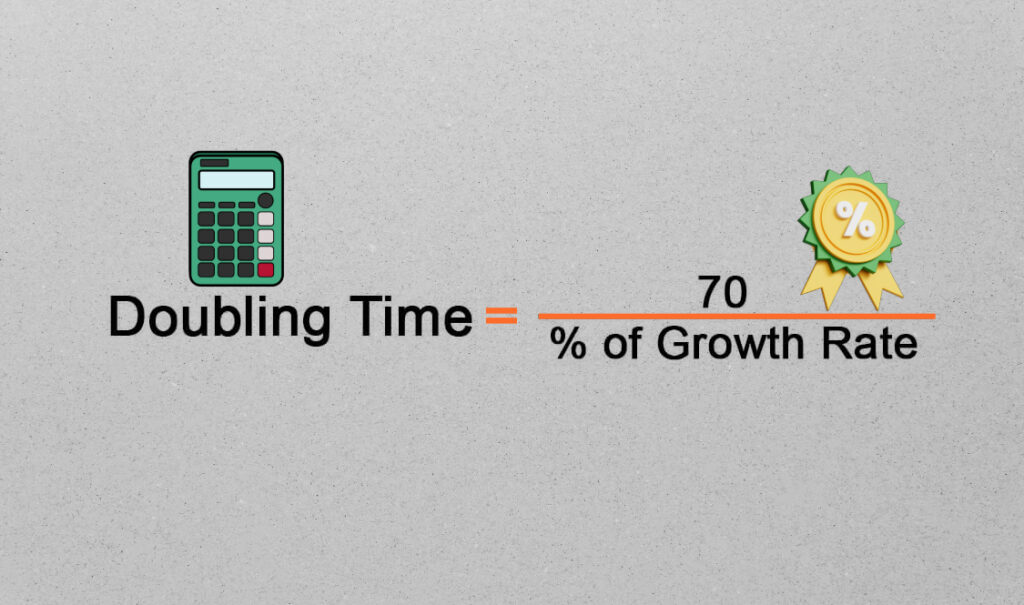
What is the rule of 70?
Rule +70 emerges as a crucial tool for investors seeking a rough estimate of how quickly their investments might double in size. At its core, Rule +70 simplifies the complex idea of compound interest, making it more accessible to individuals managing their retirement portfolios or delving into the realms of mutual funds.
Key takeaways
- Rule +70 offers a practical, albeit approximate, method for investors to gauge the future value of their investments.
- By incorporating continuous compounding into its formula, this rule provides a more optimistic yet realistic perspective on the potential for assets to grow over time.
- The rule of 70 may seem a little simplistic, but it is a good method to get the candidate investor to think, for example, as part of their preparation for retirement.
- It is even an excellent way to understand how accumulated interest accelerates the growth rate of capital.
What is the rule +70 in economics?
The principle behind Rule +70 lies in its straightforward approach: divide 70 by the annual rate of return.
This financial calculation offers a quick glimpse into the potential exponential investment growth based on its specific rate of return.
Unlike the slightly more conservative ‘Rules of 69,’ Rule +70 caters to scenarios involving continuous compounding, a concept paramount in the long-term appreciation of assets.
Understanding Rule +70 involves delving into the nuances of compounding intervals and their impact on annual interest rates.
The number 70 in this rule is not arbitrary; it serves as a key factor that determines the number of years it takes for an investment to double, given a particular annual rate of return.
This aspect of Rule +70 makes it an indispensable tool for investors who aim to achieve a precise understanding of their investment’s growth trajectory, especially in the context of a retirement portfolio.
The Rule of 70 Formula

The formula for the rule of 70 is:
Number of years to double=70 /Annual Rate of Return
Here is an example.
If you invest €1000 at 1%, you will need 70 divided by 1 or 70 years to obtain €2000. Your interest will amount to €10 after one year, €10.10 (1% x €1010) after the second year, etc.
Of course, these are theoretical calculations, necessarily approximate. They do not take into account inflation, changes in interest received, etc. But they allow you to visualize investment horizons. And therefore provide planning assistance.
Our examples show that by limiting yourself today to risk-free investments (savings accounts, savings insurance, etc.) with very low returns, you will not have enough for the rest of your life to double the initial investment.
For money that you do not need immediately, it is therefore advisable to turn to investments in the stock market. But not too risky, and diversified. A mixed fund will generally be a good compromise to start with.
Why is the rule of 70 important?
The rule of 70 can be used as a tool to help you achieve your financial goals. By understanding how long it will take for your money to double, you can develop a savings plan that will allow you to reach your goals within a specific time frame.
For example, if you know you can earn a real return of 3.5% per year, you know your investment will double (in inflation-adjusted terms) in 20 years.
The rule of 70 can also be used to compare investment options. The one with the shortest investment doubling time is the best investment, at constant risk.
You can also use the rule of 70 to reverse engineer what you need.
Example

If you want your investment to double every 10 years, you know you need 7% per year to reach your goal. This may concern a classic passive investment, such as a stock or a bond, or a personal project.
The rule of 70 can be a useful tool when it comes to personal finance, but it’s important to remember that it’s just an estimate. In reality, investments may take longer or shorter than expected to double.
Investors should also keep in mind that the rule of 70 does not account for inflation on its own. Over time, inflation can reduce the purchasing power of your money, even if your investment is growing at a healthy rate.
For example, let’s say you invested $10,000 at an annual rate of return of 7%. In 10 years, your investment will be worth around $20,000.
However, if inflation is 3% per year, the purchasing power of your $20,000 will be equivalent to $14,802 today, based on a real return of 4% per year.
Real returns are greatest over time because the idea of investing is to preserve or increase the purchasing power of money, not simply to increase money itself .
The Rule of 70 and Inflation
The rule of 70 can also be applied to other phenomena such as inflation.
For example, if inflation is 3%, you can calculate how many years it would take at 3% inflation for the price level of goods and services (on average) to double.
That would be about 23 years, taking 70 divided by 3 (23.33).
It is also commonly used for things in other areas, such as population doubling time.
The rule of 70 – In Conclusion
The rule of 70 is a quick and easy way to estimate how long it will take for an investment to double.
To calculate the number of years it will take an investment to double using the rule of 70, divide the number 70 by the annual rate of return.
The rule of 70 is only an estimate and will give slightly different results than the compound interest formula.
By understanding how long it will take for your money to double, you can develop a savings plan that will allow you to reach your goals within a certain time frame.
Inflation can reduce the purchasing power of your money. To account for inflation, it may therefore make sense to use a real rate of return rather than a nominal rate of return.
The rule of 72 is a similar rule. Still, it uses the number 72 in the numerator instead of 70, mainly to simplify the mental math involved in calculations, as 72 can easily be divided by 3, 4, 6, 8, 9 and 12 , while 70 cannot.
The post What is the rule of 70? appeared first on FinanceBrokerage.





























